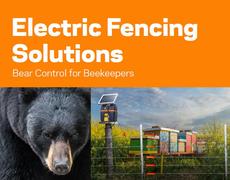Justin Rhinehart, University of Tennessee Extension beef cattle specialist, offers tips this week on farm fencing:
One of the most expensive infrastructure investments for either small- or- large-scale cattle operations is fencing. In fact, one of the most limiting factors for putting new ground into cattle production is the cost of perimeter fencing.
As with most other farm structures, adequate investment during initial installation can help reduce maintenance costs and need for replacement in the future.
When planning a new permanent fence, location and design are very important because it can influence efficiency of production for many years to come. So, make sure to leave plenty of time for planning before installing new permanent fence and take the opportunity to redesign ineffective fencing when it is replaced. Two major considerations should be the location of water sources and working facilities.
In general, fencing can be considered in two classifications; perimeter fence and cross fence. Each of these require very different planning and materials. The perimeter fence requires materials that are more permanent and secure. They often establish property boundaries and can be important for public safety and biosecurity. Since the perimeter fence has so many important functions, it requires more input costs and planning.
Types of perimeter fence include woven wire, board or PVC, barbed wire or high-tensile. Some of these can also be electrified or installed in a combination of two different types. Board and PVC fencing are often cost-prohibitive and most often used for their aesthetic value. The most common perimeter fences are woven wire with one top strand of barbed wire or five strands of barbed wire. The longevity for both of these options has increased over the last decade with the use of new technologies in manufacturing.
Cross fencing is simply the fence used to manage where cattle graze inside the perimeter fence. It can be permanent, semi-permanent or temporary depending on the intended use. It is not necessary for cross fences to be as heavy duty as the perimeter since it is used as more of a management tool rather than strictly for safety and confinement. Forage resources are often wasted by not using cross fencing to manage where and for how long cattle graze within a farm’s perimeter.
Rotational grazing often seems like a management practice that is too complicated or daunting to implement. But, combining a solid perimeter fence with low-cost, easy to use and effective cross fencing (and accounting for water and shade) can make rotational grazing an attainable goal for small herd owners. Consider implementing rotational grazing on current large, open pastures to stretch grazing further into the fall.
The cost of fencing has increased dramatically in recent years. In fact, as mentioned above, the cost of fencing if often cited as the most limiting factor for putting new pasture into beef cattle production. Even though the cost has gone up, several improvements have been made in the quality, longevity and supporting technologies of fencing and fencing materials. As with many other inputs, using inferior low-cost materials to manage immediate cash flow issues can lead to increased cost across the lifetime of the fence. In other words, putting up cheap fences can cost more in the long run.
Tennessee is a “fence-in” state. This means the landowners are required to fence in their property to avoid damage by livestock. So, according to sources found while researching for this article, a cattle producer is not automatically liable for damage caused by cattle that get out of their fencing. But, if the cattle are determined to be “notoriously mischievous” (frequently escape) or the fence is determined to be neglected, the owner can be found liable. To more fully understand livestock fencing laws in this state, consult Tennessee Code Annotated Title 44, Chapter 8.
As with the other article in this series, a full description of all cattle fencing specifics cannot be covered in a popular press article format. Consider learning more about new fencing materials, better ways to maintain existing fences or using temporary cross fencing for rotational grazing and stock piling. Consult two publications from UT Extension titled “Planning and Building Fences on the Farm” and “Temporary Fencing for Rotational Grazing” or visit your local UT Extension office.
Rusty Evans, 648-5725
Montgomery County Extension Service
November 04, 2015





